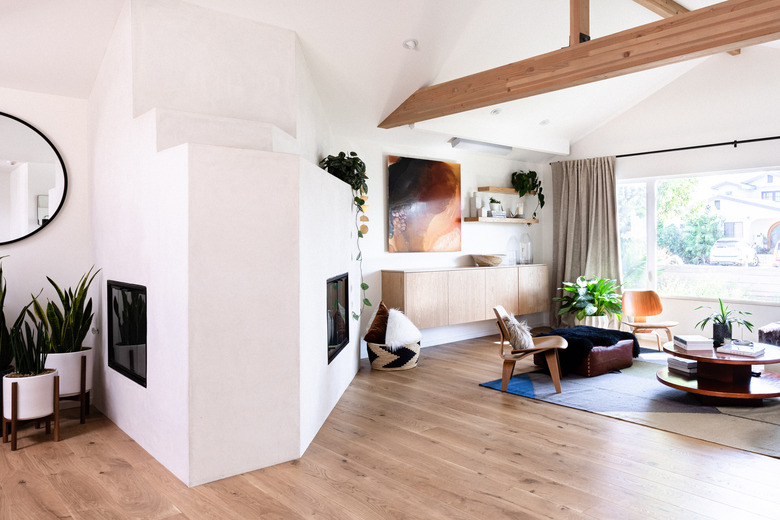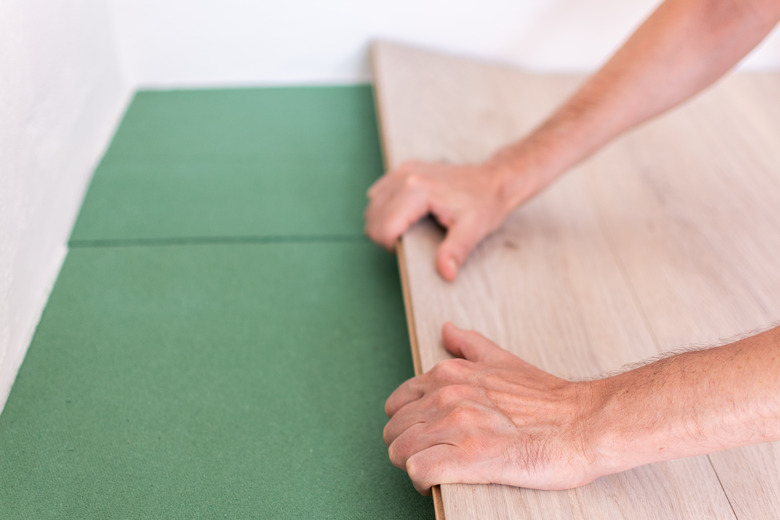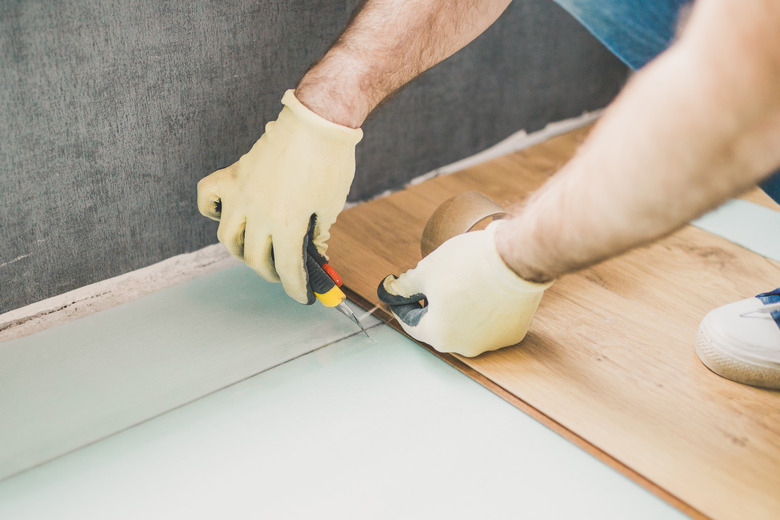Laminate Flooring Underlay: What You Need To Know
Laminate flooring is designed for quick and easy installation over almost any flat, smooth floor surface. But the hard laminate material doesn't lie directly onto that surface; it needs a layer of underlay, or underlayment, to cushion the laminate planks and ensure a comfortable, durable finished floor. Some laminate flooring includes a preattached underlayment layer on the bottom of each plank. If the flooring does not have its own underlayment, you must install a continuous layer of underlayment over the entire floor before installing the laminate.
Functions of Underlayment
Functions of Underlayment
A laminate flooring underlayment can serve a few different functions, depending on its type. But the primary role of underlayment is to cushion the flooring and make it a bit quieter and more forgiving underfoot. Another primary role of underlayment is to smooth over slight variations or imperfections in the subfloor, helping the flooring to lie flatter and last longer.
While all laminate underlayment provides cushion, certain types also provide soundproofing or moisture-resistance. Moisture is an important consideration when installing laminate over concrete subfloors, especially in a basement, where moisture can wick up through the concrete from the earth below. In these situations, the underlayment should be designed as a moisture barrier (sometimes called a vapor barrier, although a true vapor barrier involves a different application). Alternatively, you can use standard underlayment over concrete if you install a moisture barrier of thick plastic sheeting (6-mil thickness is the standard recommendation) between the concrete and the underlayment.
Do I Need an Underlayment?
Do I Need an Underlayment?
When you purchase laminate flooring, you should always check the manufacturer's installation specifications, where you'll find the underlayment requirements. Some laminate flooring comes with a layer of underlayment attached to the bottom of each plank. In this case, you do not use another underlayment; however, you may need a separate moisture barrier if you're going over concrete. Flooring that does not have preattached underlayment almost always needs a separate underlayent for proper installation—and this may be required to satisfy the flooring's warranty.
Types of Laminate Flooring Underlayment
Types of Laminate Flooring Underlayment
According to Floor Critics, the most popular types of underlayment for laminate are plastic foam, cork and felt. Each has specific advantages, and manufacturers sometimes combine materials to make floor underlayment that can multitask.
- Foam underlayment is the most common type. It is basically plastic infused with air bubbles. The bubbles provide thermal insulation and sound reduction. Foam underlayment costs about 22 to 45 cents per square foot. Some products are made from recycled plastic, such as Courey Eco-Friendly Foam, which is recyclable.
- Cork is commonly used for preattched underlayment but is also available in rolls. Cork is excellent for cushioning as well as sound absorption, and it provides some degree of thermal insulation. Rolled cork costs about 50 to 75 cents per square foot. Well-known brands include AcoustiCORK and Eco-Cork, which is also available as Eco-Cork Foam, a hybrid cork/foam floor underlayment.
- Felt underlayment is considered top-of-the-line and makes the best sound barrier. Generally manufactured from recycled fibers, felt is eco-friendly and is heavier than cork or foam. Felt comes in rolls and costs about 75 cents to $1.25 per square foot. It is available from QEP Products and Bellawood, among other manufacturers.
DIY Underlayment Installation
DIY Underlayment Installation
Many homeowners choose laminate flooring because they want to do the installation themselves, and laminate is one of the easiest types of flooring to install. Installing the underlayment is also easy, usually being no more complicated than unrolling it, cutting it to fit and taping the seams to form a continuous sheet. The laminate planks go right on top of the underlayment, without glue or fasteners.
Always remove the baseboards before installing underlayment. It should extend all the way to the edges of the floor. Many installers let the underlayment ride up along the edges of the walls for 1 or 2 inches and trim it with a sharp knife after laying the flooring.
References
- National Wood Flooring Association: Installation Guidelines
- Floor Critics: Best Underlayment for Laminate Flooring
- BuildDirect: Laminate Flooring Underlayment
- Hosking Hardwood: All About Underlayments: Purpose, Benefits & Install Tips
- Home Flooring Pros: Find the Best Underlayment for Each Type of Flooring



